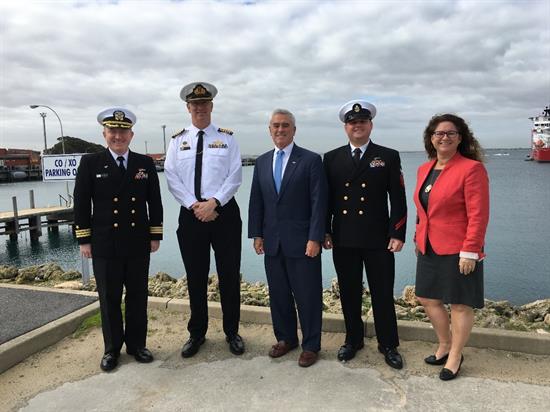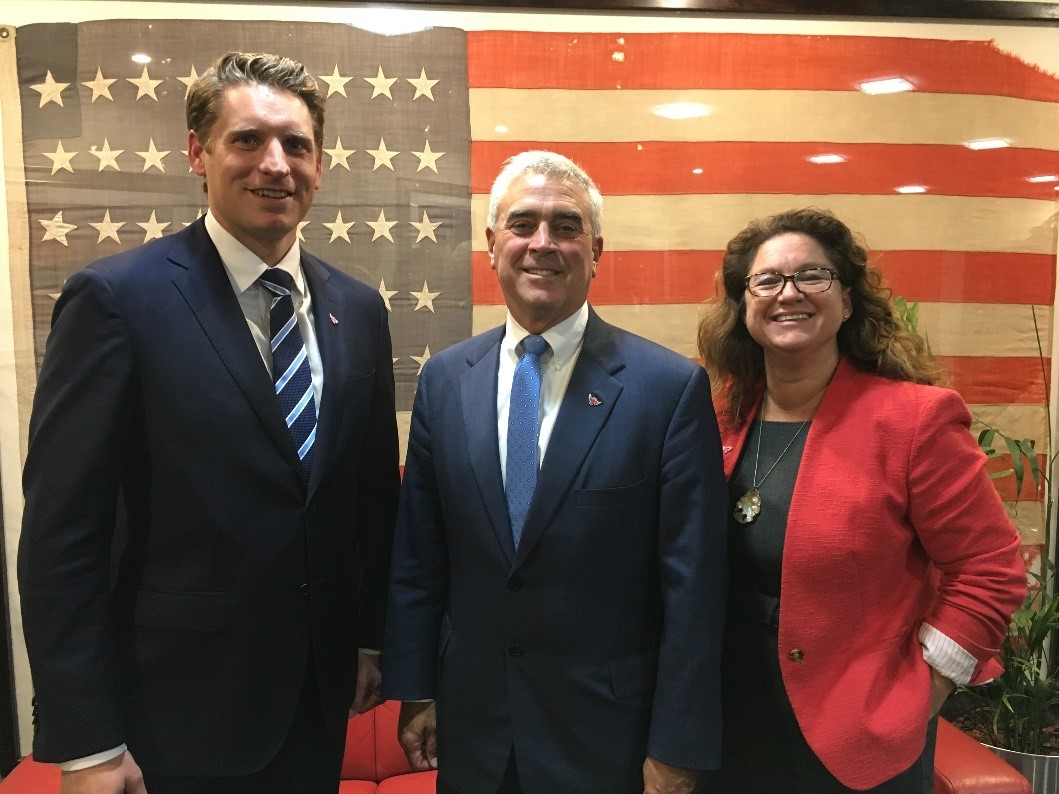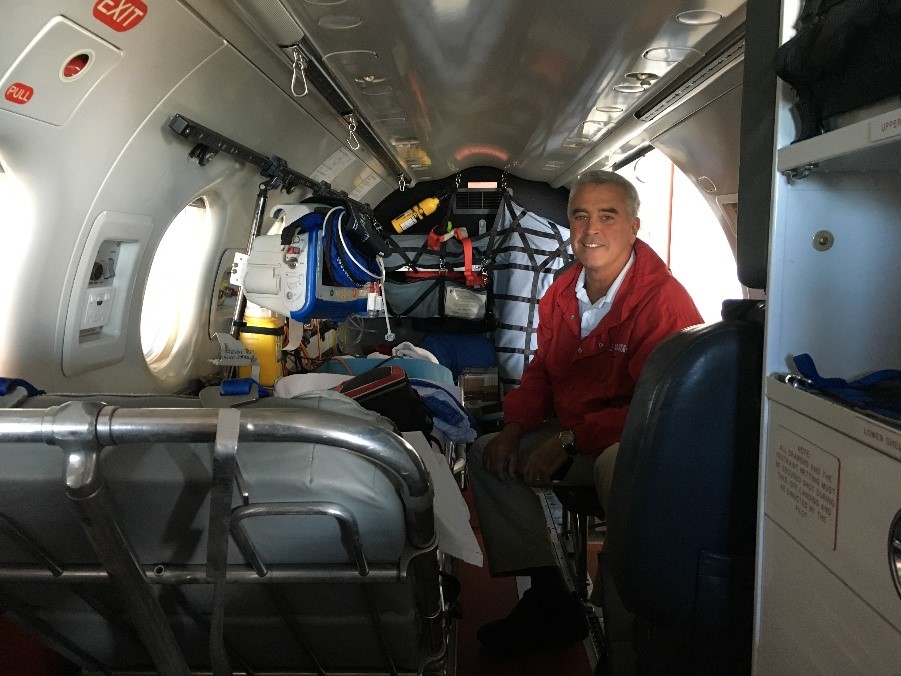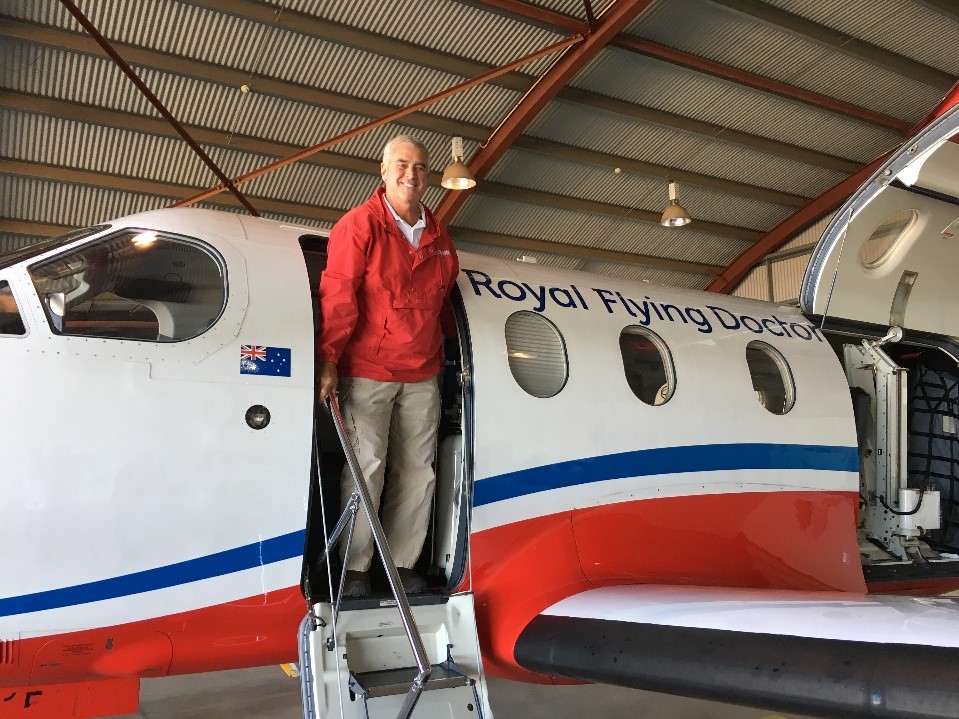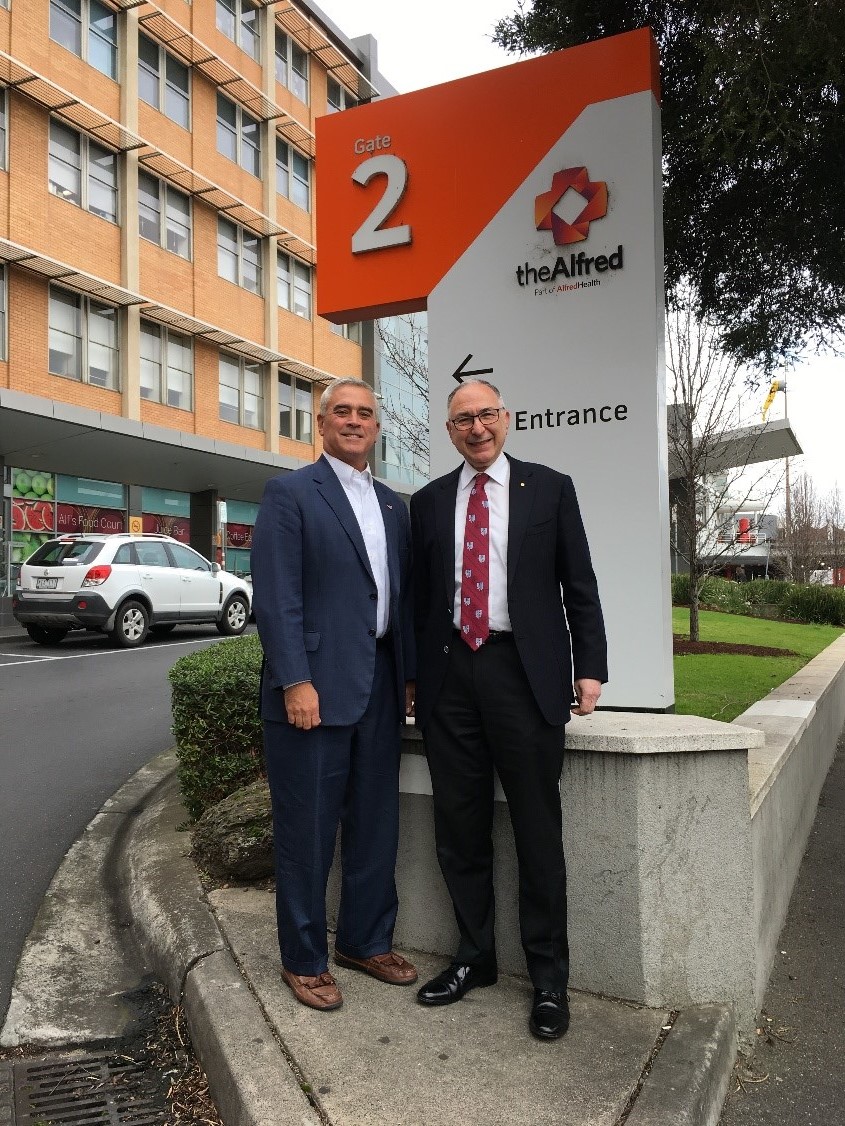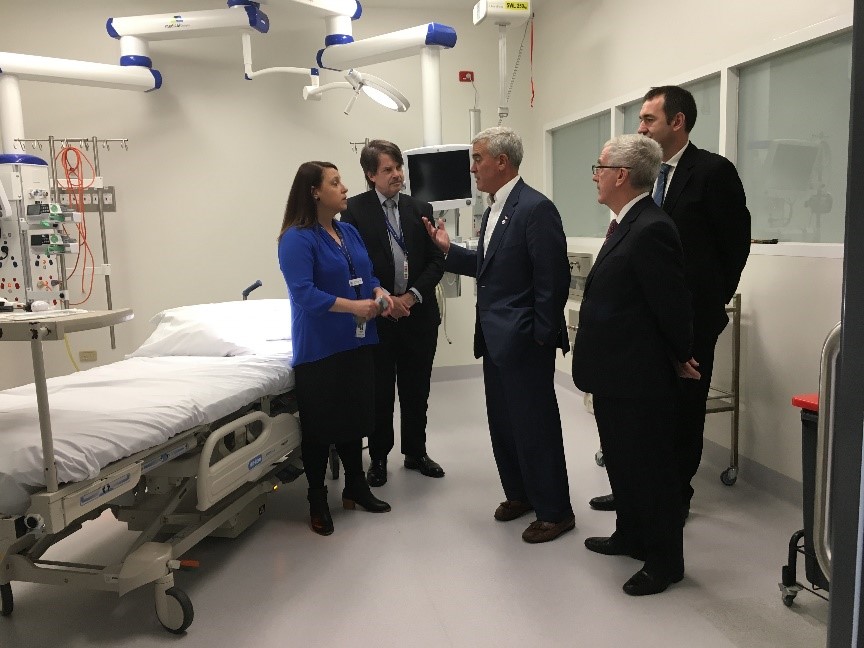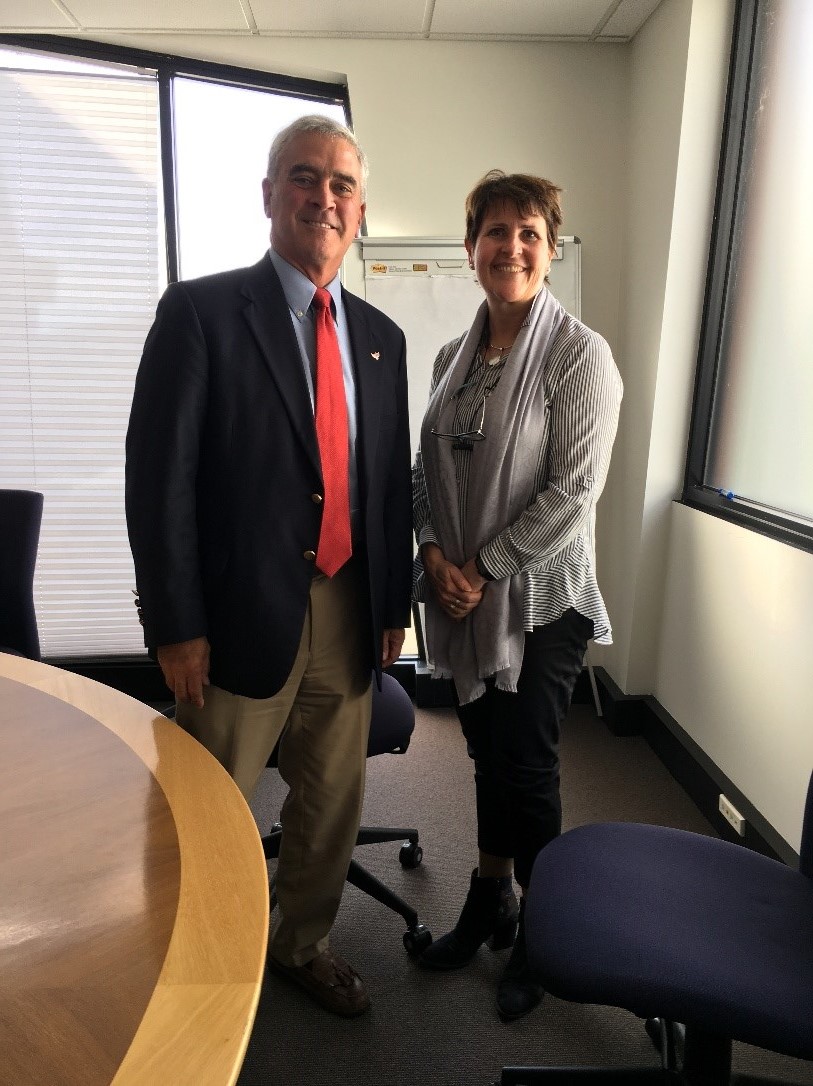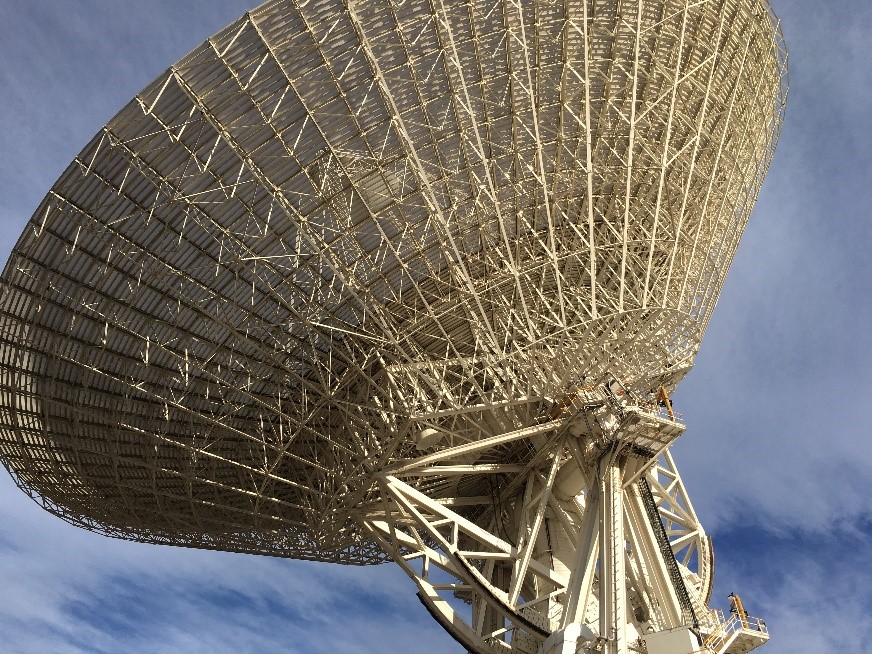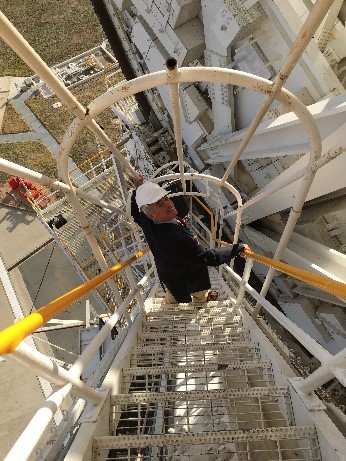Blog
Australia
Washington,
August 30, 2018
|
Ann Tumolo
(202-225-3164)
This summer, as part of my oversight responsibilities on the House Permanent Select Committee on Intelligence (HPSCI), I traveled to Australia to meet with U.S. and Australian officials to learn first-hand about where and how our nations are working together on intelligence gathering, cybersecurity, counterterrorism, and other important issues of mutual interest between our two nations. While there, I also had the honor of representing the U.S. in several meetings and discussions organized by the Australian-American Leadership Dialogue, an organization formed to foster better economic and national security relationships. Our countries’ special partnership just passed ‘100 years of Mateship’ and we look forward to the next 100 years of cooperation in the name of freedom. During my visit, I had the opportunity to meet with Australian leaders to discuss our cooperation on space exploration, counterterrorism, military, health care, and cybersecurity objectives. Below is a more detailed run-down of my meetings and what we learned. Perth: Her Majesty’s Australian Ship (HMAS) Stirling I kicked off my meetings in Australia in Perth, the capital of Western Australia. I met with American servicemembers serving abroad at HMAS Stirling, a Royal Australian Navy base. This is a west coast base for the Australian submarine fleet and several surface vessels, on the Indian Ocean. It is a unique joint U.S. and Australia effort that allows for the rotation of U.S. personnel at the base, continuing a time-honored tradition of cooperation between the United States and Australia. This joint effort fosters a tight and collaborative environment for servicemembers from both our nations. The base also houses a submarine escape training facility as well as several submarine search and rescue vessels. While there, I met with Captain Brian Delamont, the Commanding Officer of HMAS Stirling as well as members of the U.S. Navy on exchange at HMAS Stirling.
Congressman Wenstrup and U.S. Consul General Rachel Cooke meet with the Australian Base Commander, Captain Brian Delamont of the Royal Australian Navy, as well as U.S. Navy personnel on exchange at HMAS Stirling. Meeting with U.S. Consul General and Australian Parliamentarian Following my tour of HMAS Stirling, I sat down with the U.S. Consul General Rachel Cooke and Australian Parliamentarian Andrew Hastie, of the Australian Joint Committee on Intelligence and Security (PJCIS). We discussed the U.S.-Australian intelligence sharing relationship, the coordination and expansion of Australia’s intelligence services, as well as Australia’s ongoing efforts to combat foreign influence. As Chinese global influence grows, Australia and the United States remain committed to the international rules-based order and working with regional allies to maintain peace and security. Through intelligence sharing and close coordination, the United States and Australia are working together to prevent foreign subversion of our democratic institutions, and to counter foreign malign influence campaigns aimed at exploiting our free and open societies.
Congressman Wenstrup and Consul General Rachel Cooke meet with the Hon. Andrew Hastie, Parliamentary Joint Committee on Intelligence and Security (PJCIS). Meeting with Governor of Western Australia I rounded out my Perth visit with a meeting with the former Australian Deputy Prime Minister and Ambassador to the U.S., and now Governor of Western Australia, Mr. Kim Beazley. Mr. Beazley has been a staunch supporter of U.S.-Australian relations over the years and we discussed many of the economic and military successes of the first ‘100 years of Mateship’ as well as continuing the joint effort for the next 100 years. July 2018 marked 100 years since the first time Americans and Australians fought side by side in an offensive action. Since then, U.S. and Australian soldiers, sailors, marines, airmen have served alongside each other in every major conflict. Our servicemembers have fought side by side in WWII, the Korea, War, and have been on the front lines with us in the Global War on Terror, both in Iraq and Afghanistan. In addition to sharing the battlefield, our special forces have trained together. It is important that our nation’s military posture and our national security and military strategies and policies continue to bolster that relationship, particularly knowing the potential threat of a rising China in the Pacific region. Alice Springs: I travelled from Perth to Alice Springs, in central Australia, where I focused on health care related issues. As a doctor, I know firsthand the value of global dialogue between our medical communities, from sharing treatment and prevention methods to sharing successes and shortfalls of how our medical fields function. As we continue the effort to improve health care at home, I wanted to hear about what’s working and what’s not from our allies in Australia. Royal Flying Doctors Service of Australia I met with a non-profit organization called the Royal Flying Doctors Service of Australia. The size of the Australian Outback presents a unique challenge as many Australians cannot access medical care without extensive travel. Instead of patients travelling to access care, the Flying Doctors travel to remote areas to provide emergency and primary health care services. The Flying Doctors are one of the largest and most comprehensive aeromedical organizations in the world.
Congressman Wenstrup tours the Royal Flying Doctors Service of Australia. Melbourne: The Alfred Hospital I toured The Alfred Hospital’s Emergency Room, ICU, and ward alongside Professor Jeffery Rosenfeld. Professor Rosenfeld and I have similar backgrounds as military doctors. Professor Rosenfeld served in seven overseas operations, retiring with the rank of Major General in the Australian Defense Force. Professor Rosenfeld’s close work serving both Australian and U.S. servicemen earned him the United States Air Force Commendation Medal. It was an honor to meet him and discuss defense and civilian health care issues. Our tour included the Major Trauma Service at The Alfred Hospital, which is the largest and most active in all of Australasia – a region including Australia, New Zealand, New Guinea, and offshore islands. The Alfred Hospital Trauma Center includes an integrated helipad, 44 bed trauma ward, and a 36 bed state-of-the-art ICU, and related burns and hyperbaric services.
Congressman Wenstrup tours the Alfred Hospital with Professor Jeffery Rosenfeld. Tour of the Royal Melbourne Hospital and the Victorian Comprehensive Cancer Centre Following The Alfred Hospital, I toured the Royal Melbourne Hospital and the Victorian Comprehensive Cancer Centre, which is an alliance of ten successful Victorian organizations committed to cancer control. These include the Peter MacCallum Cancer Centre, Melbourne Health, the University of Melbourne, the Walter and Eliza Hall Institute of Medical Research, the Royal Women’s Hospital, the Royal Children’s Hospital, Western Health, St. Vincent’s Hospital Melbourne, Austin Health, and Murdoch Children’s Research Institute. The Victorian Comprehensive Cancer Centre brings together 2,200 clinical and research staff under one roof to care for 30,000 patients every year. The visit gave me the opportunity to discuss the acceleration of biomedical research and the opportunities for bilateral cooperation to share treatments, cures, and prevention methods.
Congressman Wenstrup speaks with members of the Royal Melbourne Hospital. Discussions with local business and government leaders. During discussions with local business and government leaders, I learned of substantial tax issues for Americans working in Australia. Some companies estimate that it costs them an additional 40 percent to pay an American to work in Australia. The ability of Americans to do business successfully, especially within the territory of a strong ally like Australia, is critical to a strong global economy. I look forward to working with my colleagues on Ways and Means to address issues in the international tax arena, and the feedback I received on this trip was very helpful to that end. My final stop was the capital of Australia, Canberra.
Congressman Wenstrup speaks with Elizabeth de Somer, the CEO of Medicines Australia. Canberra: Meeting with Charge d’Affaires James Carouso During my final stop on the tour, I met with Charge d’Affaires (CdA) James Carouso to discuss the strategic bilateral relationship between the U.S. and Australia. Discussions covered ‘100 years of Mateship’, the next 100 years of Mateship, as well as the tax burden previously discussed. 2019 will mark the 50th anniversary of the moon landing where Australia played a critical role in providing the only downlink from the moon for that pivotal moment in history. Meeting with Australian Secretary of Defence I also met with Gregory Moriarty, Australia Secretary of Defence, to discuss the strategic bilateral relationship between the U.S. and Australia and Australia’s strategy on foreign military expansion in the Indo-Pacific region. I have a growing concern of Chinese military build-up in the Pacific islands, right off Australia’s coastline, similar to the militarization of the South China Seas islands. Canberra Deep Space Communication Complex (CDSCC) I rounded out the trip with a site visit to the Canberra Deep Space Communication Complex (CDSCC). The CDSCC is one of the largest NASA tracking and communication facilities outside of the United States. It is one of the three facilities that make up the worldwide Deep Space Network (DSN), providing NASA the ability to continuously track exploration spacecraft. The CDSCC has provided critical support roles for notable missions such as the Apollo 11 lunar landing in 1969, the 2012 Mars Curiosity robotic rover, the New Horizons flyby of Pluto in 2015, the Jupiter Probe in 2016, and the Cassini spacecraft crash into Saturn in 2017. I saw firsthand the close and continuing daily joint effort between NASA and the Australian government at the facility.
Congressman Wenstrup tours the Canberra Deep Space Communication Complex (CDSCC). |


